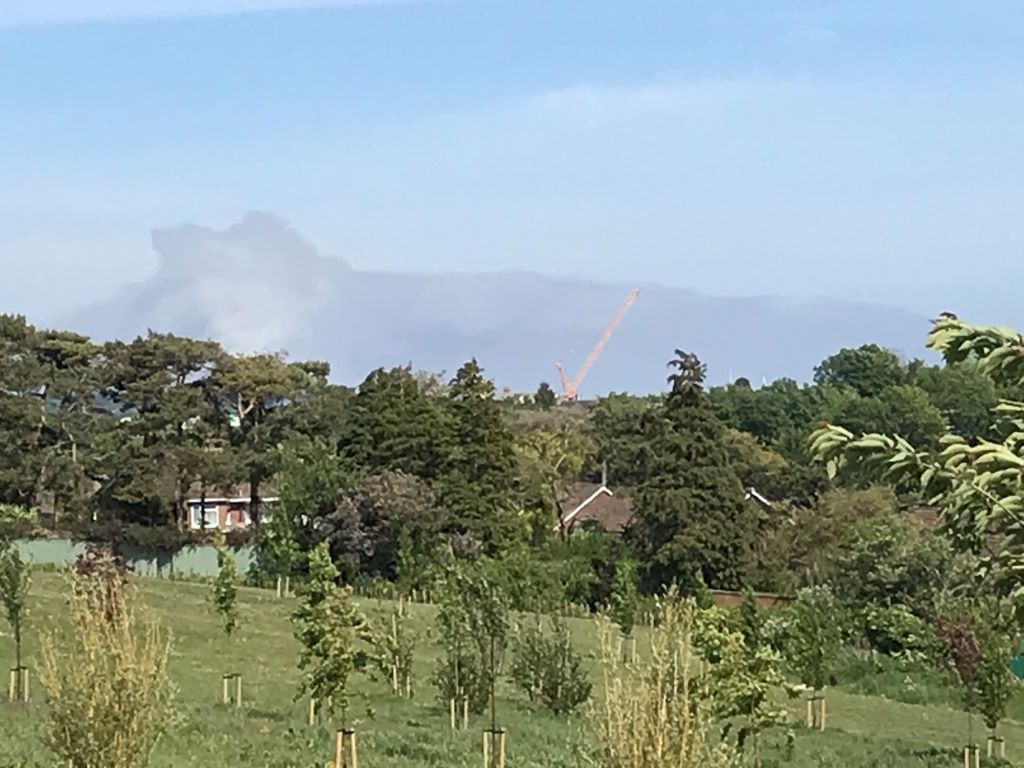
The ground was bone dry and everything was flowering early. I was up at Poundbury (near Dorchester), checking on an area of wildflower meadow that I’d arranged to have sown. After the incessant downpours of the Autumn and Winter, the rain stopped. Then we had just 60mm of rain across two months. It was yet another clear blue day, when I noticed an odd-looking cloud on the eastern horizon.
Then I realized it wasn’t a cloud. It was smoke. A vast pall of smoke, billowing high into the air.
Returning home, I checked the news. The fire was out of control, spreading across hundreds of acres of Wareham Forest. Flames leapt up 20 metres and more, to the canopy of tall mature conifers. It took fire crews and Forestry Commission staff two weeks before the fire was finally extinguished, by which time it had raged across 220 hectares of land.
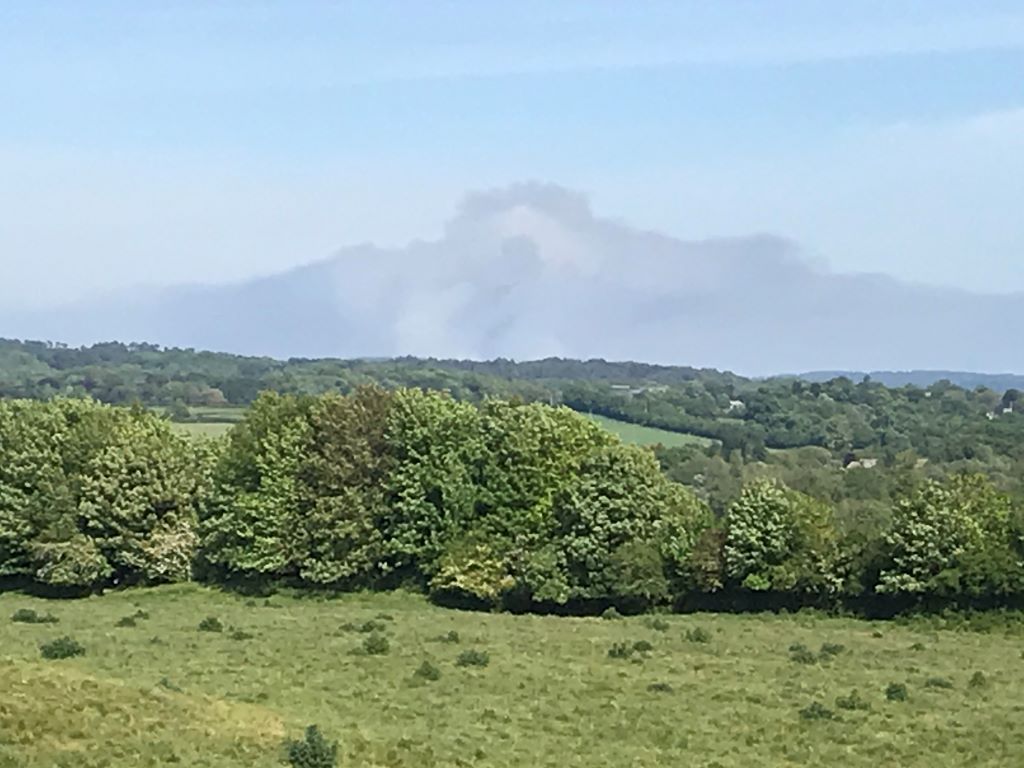
The ‘Forest’ isn’t really a forest. It is a 1500-hectare modern conifer plantation planted on one of the fragments of what was once a vast heath stretching across Dorset, from the Hampshire border to Dorchester, immortalised by Thomas Hardy as ‘Egdon Heath’. Over 80 per cent of the former lowland heathland area has been destroyed or damaged, particularly during the 20th century. One of the reasons heathland disappeared was because it was planted with conifers by the Forestry Commission. The Commission acquired the heaths that would become Wareham Forest in 1924 and commenced planting what they regarded as worthless wasteland with fast-growing conifers. The country had almost run out of wood (for pit props) during the First World War and, as land prices crashed during the agricultural depression, the State snapped up land very cheaply, with the aim of securing future national timber supplies.
Wareham Forest comprises land leased by local landowning estates to the Government. The problem was that heathland has extremely poor soils. This is why it is heathland, because only the hardiest wild plants, including heather, can grow there. The heath is also wet – in places it is bog, with several metres of peat. The Forestry Commission set about trying to convert this wild place with poor wet soils (but thriving wildlife) into a suitable place for conifers to grow. They ploughed the soil into ridges so the trees could be a few inches above the water table. They drained the bogs.
During the Second World War, when once again the nation needed to draw on its own timber supplies, “lumberjills” from the Women’s Land Army lived in huts in the Forest, or were billeted in nearby Wareham. The lumberjills continued felling trees, planting trees, clearing drainage ditches and managing the forest, but the soils were so infertile that the trees produced were low quality – and always vulnerable to fires.
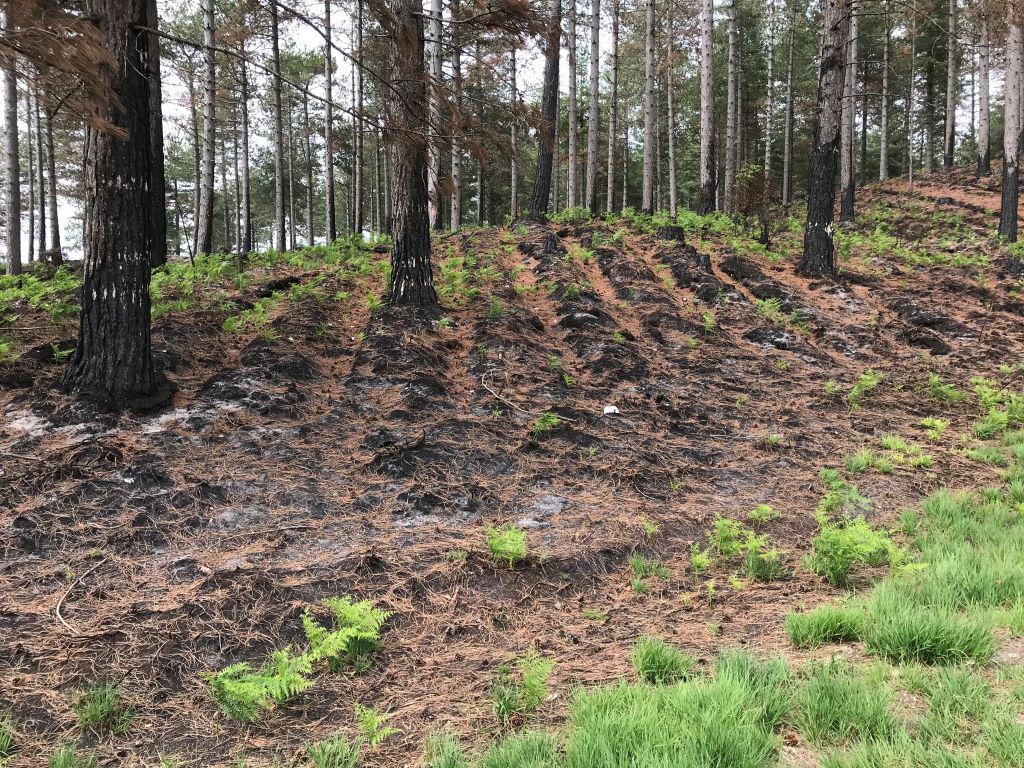
After an exceptionally dry summer in 1947, Wareham Forest burnt in October. The fire even made it into “Life” magazine. That time it burned for four days, fuelled by the trees and ammunition dumps left over from soldiers training for D-Day. Fire was clearly a problem at Wareham Forest from its earliest days. In 1969 Francis Parsons, Chief Forester for Wareham Forest, was awarded the MBE for “his outstanding work in fire control”.
It was not fully appreciated in the 1920s that lowland heathland is a very important wildlife habitat – and that England has an international responsibility for its conservation. For 30 years now, however, the Forestry Commission has recognised that lowland heathland is valuable for wildlife, and has, commendably, started to remove some of the conifers to restore heathland, but large areas still remain. Cattle grazing has been reintroduced to a small area of the Forest to aid recovery from the damaging effects of planting conifers.
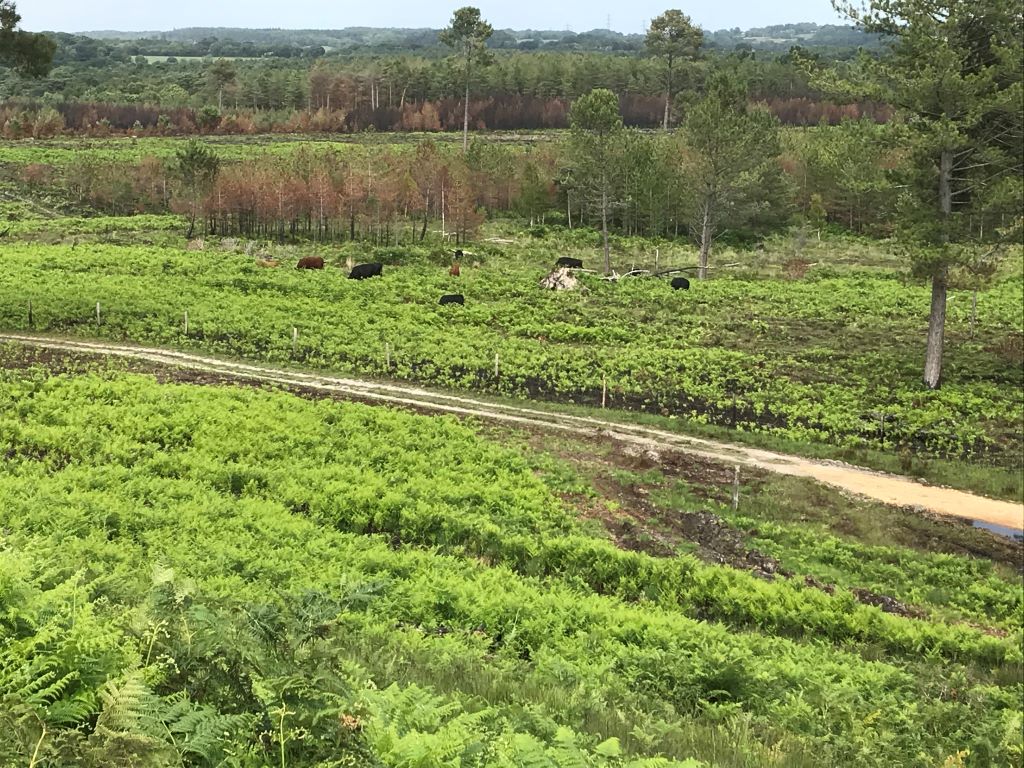
Fire is no stranger to lowland heathland. Fire contributed to the creation of the lowland heaths that once covered large parts of England – perhaps as long ago as the Mesolithic period, before the advent of farming. By the time farming became established in the Neolithic period, heaths were present, maintained by deliberate burning, and grazing by domestic livestock. This usage, alongside other resources provided by the heaths, ensured they were a valued part of the economy until the 19th century, when they started to be perceived as waste land. Many were commons, and subjected to enclosure and conversion into agricultural land. Fire continued to be used, to create lush new spring growth for livestock to graze.
Fire, when carried out sensitively, does no lasting damage to the heathland wildlife, and small regular fires (combined with grazing) prevent fuel from building up. Forestry management, by contrast, creates dense stands of flammable conifer trees. It also creates brash (what’s left over after the economic trunk of the tree has been harvested) that is left on the ground. Both live trees and brash create large sources of fuel for uncontrolled, devastating fires such as the one in May.
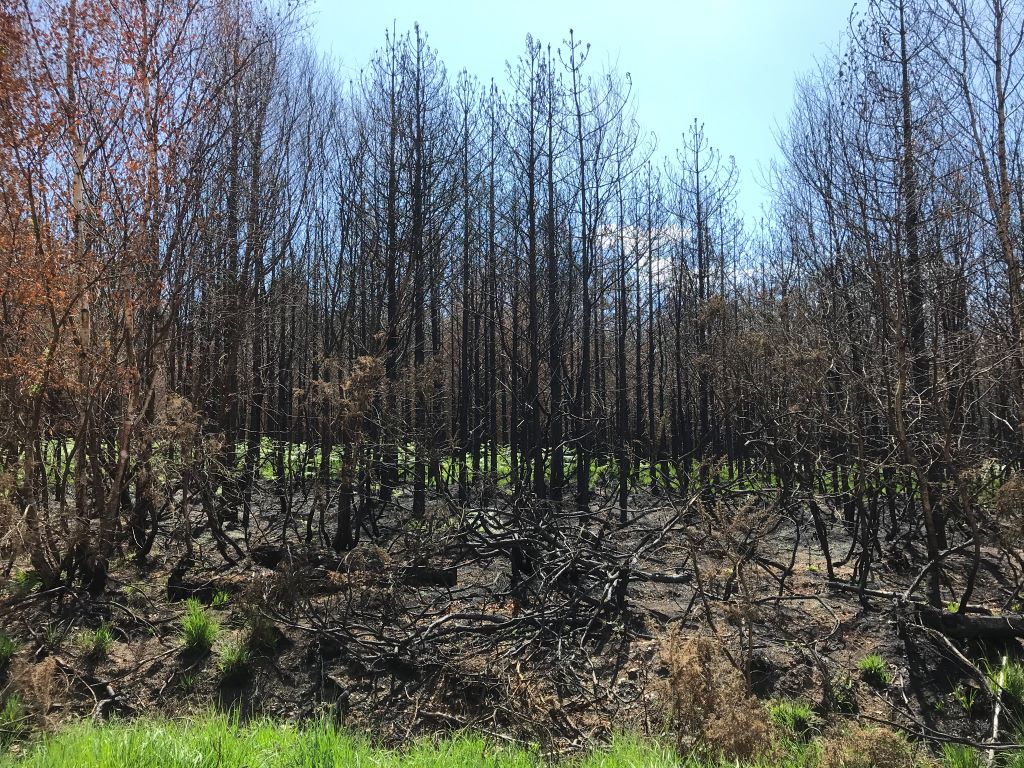
It’s almost certain that the 20 May fire was caused by a disposable barbecue: several were found by the Fire Service. Dorset Council is now considering a ban on the sale of what are effectively fire-bombs, when lit on tinder-dry heaths. The Government has changed the Countryside Code, such that it now states “Don’t have Barbecues”. The Forestry Commission have erected signs to the same effect.
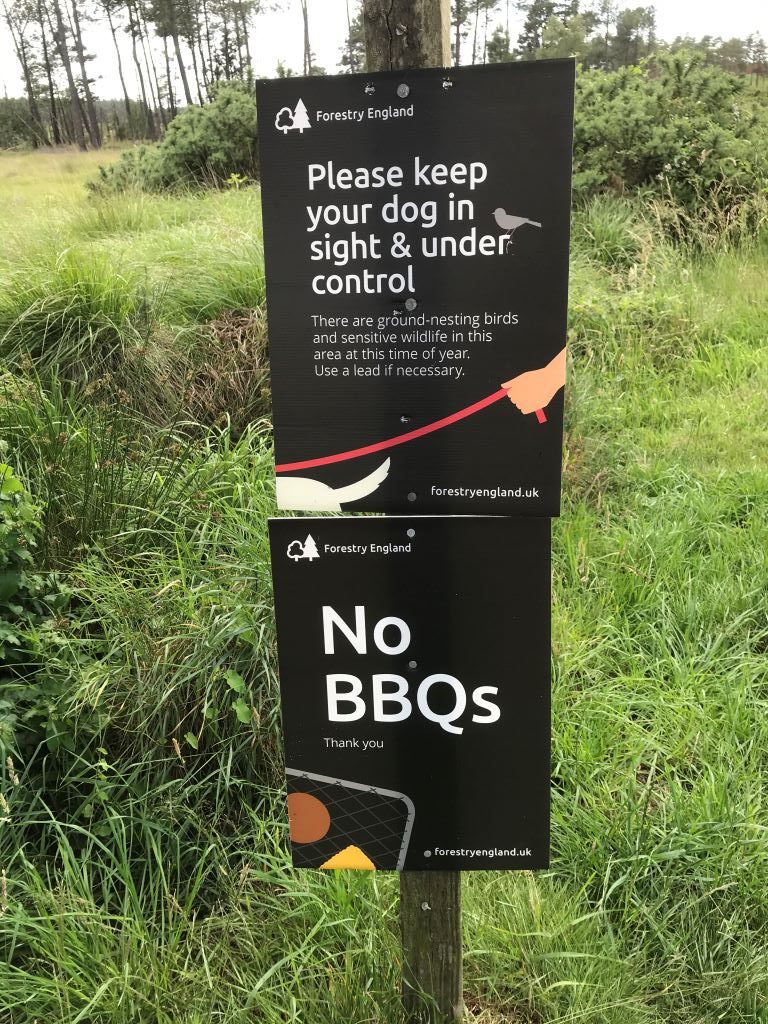
Updating the Countryside Code and installing signs is an obvious reaction, but its success presupposes that those intent on having an enjoyable outdoor experience would take any notice of signs and ‘codes’. Covid-19 has created increased demand for access to the countryside. It seems likely this additional demand will continue through the summer and autumn while other leisure activities are still curtailed. Furthermore, acess continues to rise, as more houses are built in the area.
The Forestry Commission has launched a ‘crowdfunder’ appeal, asking for the public to raise funds for Wareham Forest, including for “restocking.” Restocking means replanting with conifers, on heathland.
We are now in the midst of a climate and ecological emergency, with our climate shifting to a pattern where droughts are more frequent, increasing the risk of fire. Instead of planting more conifers to replace those destroyed by fire, it would be better to restore the heath through more grazing – even bringing back lost species, as has been done in Kent. As Dr Lesley Haskins of the Erica Trust, a charity dedicated to heathland conservation, points out:
“To be asking the public to fund this restocking of these pines, especially at this time, is nothing short of shocking.”
Covid-19 could provide the opportunity for us to rethink many aspects of our lives. It could also be the catalyst for a different way of thinking about land, especially public land. Restoring ‘Wareham Forest’ to Wareham Heath might be an example for others to follow.




